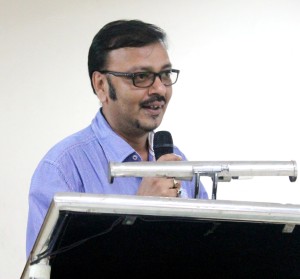 The concept was simple – to provide the necessary medical support to patients without confining them within the often overbearing precincts of the hospital. And it made a lot of sense. For one, life-saving interventions are generally not required after the initial few days of the admission of a patient, who can be safely transferred home and provided with palliative care, thereby reducing the overload on the hospital. The system works out to be beneficial for the patient as well, as it obviates the need of the patients to share the overhead costs of the entire Hospital, which is otherwise apportioned to them. The hospitals are free to focus their attention on the relatively more critical cases (and increase their inflows) while the patients can access the medical assistance needed for their recuperation and rejuvenation at a much reduced cost – a win-win for all concerned.
The concept was simple – to provide the necessary medical support to patients without confining them within the often overbearing precincts of the hospital. And it made a lot of sense. For one, life-saving interventions are generally not required after the initial few days of the admission of a patient, who can be safely transferred home and provided with palliative care, thereby reducing the overload on the hospital. The system works out to be beneficial for the patient as well, as it obviates the need of the patients to share the overhead costs of the entire Hospital, which is otherwise apportioned to them. The hospitals are free to focus their attention on the relatively more critical cases (and increase their inflows) while the patients can access the medical assistance needed for their recuperation and rejuvenation at a much reduced cost – a win-win for all concerned.
Secondly, being treated within the cocoon of familiarity that the home-stay offers reduces the obvious psychological pressures associated with hospitalization. Besides, it is also a myth that the ill and the infirm are exposed to myriad infections at home and should therefore be best sent to the sanitized environs of hospitals. As a matter of fact, repeated studies have reiterated the effectiveness and efficacies of being treated out of home, even highlighting the fact that the chances of being exposed to secondary infections are far less at home. And, contrary to popular belief, this branch of healthcare is not of recent vintage – it has been a common practice dating back to the 17th century with firm moorings in the Roman Catholic traditions.
Thirdly, with increased life expectancies, the adjunct – of taking proper care of the aged, especially in the backdrop of nuclear families and changing socio-cultural mores – is increasingly coming into sharper focus with an urgent need to have a system that will reduce their dependence on hospitalization even while they are provided with the best healthcare facilities that are available. Even by conservative estimates, the population of the elderly in India will be around 175 million by 2026 and with about a meager 0.9 hospital beds per thousand, in India at the present, the enormity of the problem is easy to comprehend.
These numbers, however frightening to some, is opportunity to others and the number of entities jumping into the fray, purportedly offering Home Care services is shooting through the roof. And it is this deluge – of India’s fabled herd of serial entrepreneurs – that is scaring the wits out of the industry stalwarts.
They are unanimous about the denunciation. Homecare is not about aggregation – the supply of nurses and aayas as most of these self-styled caregivers would like us to believe. On the contrary, it is about inter-disciplinary care teams, working in tandem with the patients and their families to clarify goals of care and provide symptom management, psycho-social and even spiritual support, apart from specified treatments. Whatever be the diagnosis, homecare focuses on providing patients with relief. Relief, from the symptoms of the affliction, pain, and physical, as well as psychological stress, that accompanies an illness. The ultimate goal of such treatment is therapeutic – to improve the quality of life of the patient as well as those of the immediate family.
In the western countries, where healthcare is guaranteed by the Government, Homecare functions as an extra layer of support, with Hospices being an important link in the entire scheme of things. Health professionals, primary care physicians and specialists work together to provide the best of both worlds which have actually added to their popularity. Community palliative care programs and skilled nursing facilities are also integral parts of this system.
However, Homecare, in its various avatars, is still in its infancy in India, though the facts that it has arrived and is here to stay are well acknowledged. How fast the segment moves to keep its tryst with destiny and how it evolves along the way, will be on which will depend the wellbeing of millions who are today suffering its absence in silence.
The piece was originally written f0r the Express Health Guide 2016.
